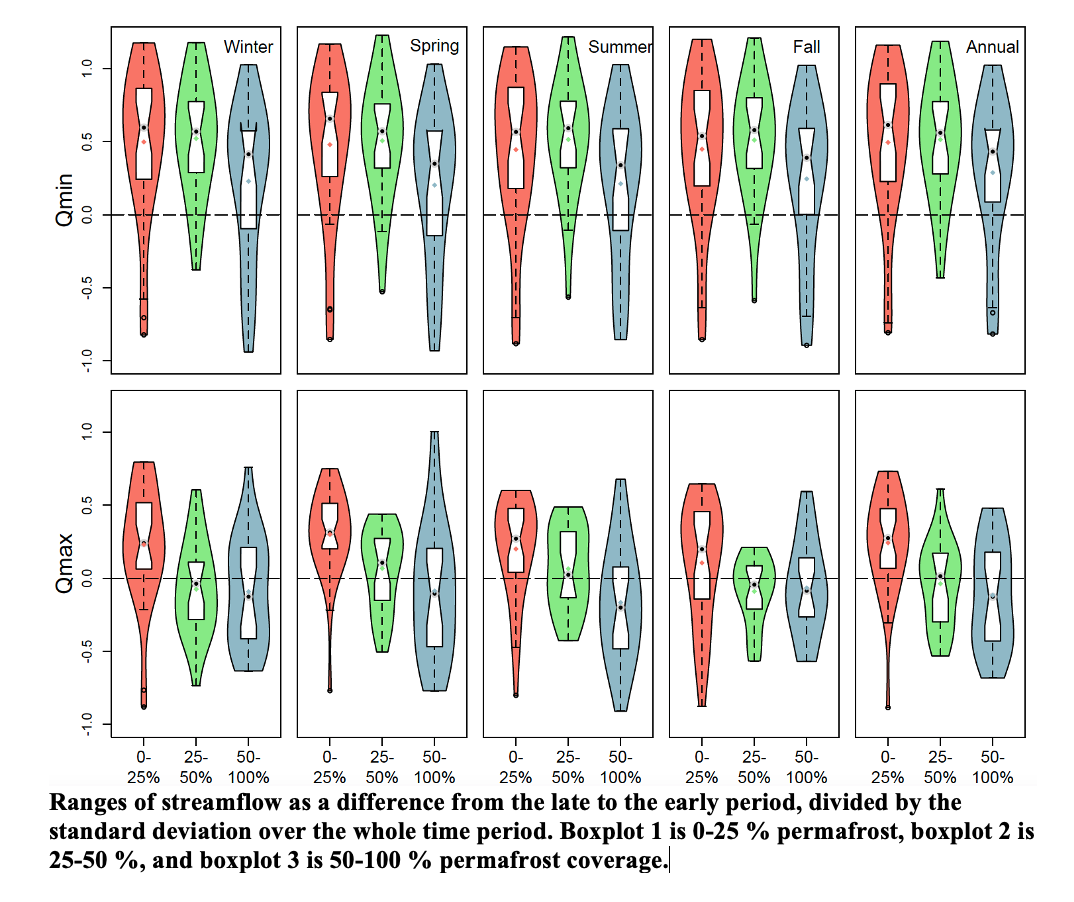Recent Changes in Streamflow Seasonality across Permafrost Basins of North America
Climate change impacts on permafrost, including changing temperatures, precipitation, and land cover (i.e., vegetation), are widely anticipated to cause major shifts to streamflow timing and magnitude, with resulting impacts to hydro-ecosystems across the high latitudes of the globe. Recent trends (1989-2019) in observed minimum and maximum streamflow were analyzed for 77 watersheds across North America. USGS and Environment Canada streamflow gages were preprocessed to minimize loss of streamflow information owing to discontinuous and low-quality observations. Watersheds dominated by permafrost (> 50% coverage) demonstrated a reversal in maximum streamflow trend in the latter half of the period (2005-2019) towards increased maximum streamflow export. However, the non-dominated permafrost watersheds (0-25 % coverage) experienced decreasing maximum streamflow trends (p-value<=0.25) for the late but not the early (1989-2004) period in all seasons. Minimum streamflow trends, on the other hand, showed variability across most systems containing some permafrost (0-50% coverage), but significantly increased in the latter period for all seasons for the permafrost-dominated systems. To investigate the drivers of maximum streamflow trends during the snowmelt period, we used multiple linear regression between observed streamflow trends and ERA5-Land climate reanalysis data trends, as well as static landscape parameters. Three models were developed for each period on the full set of gages and then run for each of the three permafrost conditions. For the 30-year and the early period, multiple linear regression models could approximate all permafrost conditions. For the latter period, these models could be applied with skill to approximate all non-dominant permafrost watersheds, but the approach was not predictive in the permafrost-dominant systems. To explore drivers of streamflow trends in permafrost-dominated watersheds, we used GloFAS-ERA5 reanalysis streamflow to ensure a sufficient sample size for utilizing machine learning techniques to identify the main causes of these recent streamflow trends. The land surface shifts reflected in changing permafrost-dominated streamflow systems strongly affect carbon emissions, with reverberations on a Pan Arctic and global scale.

